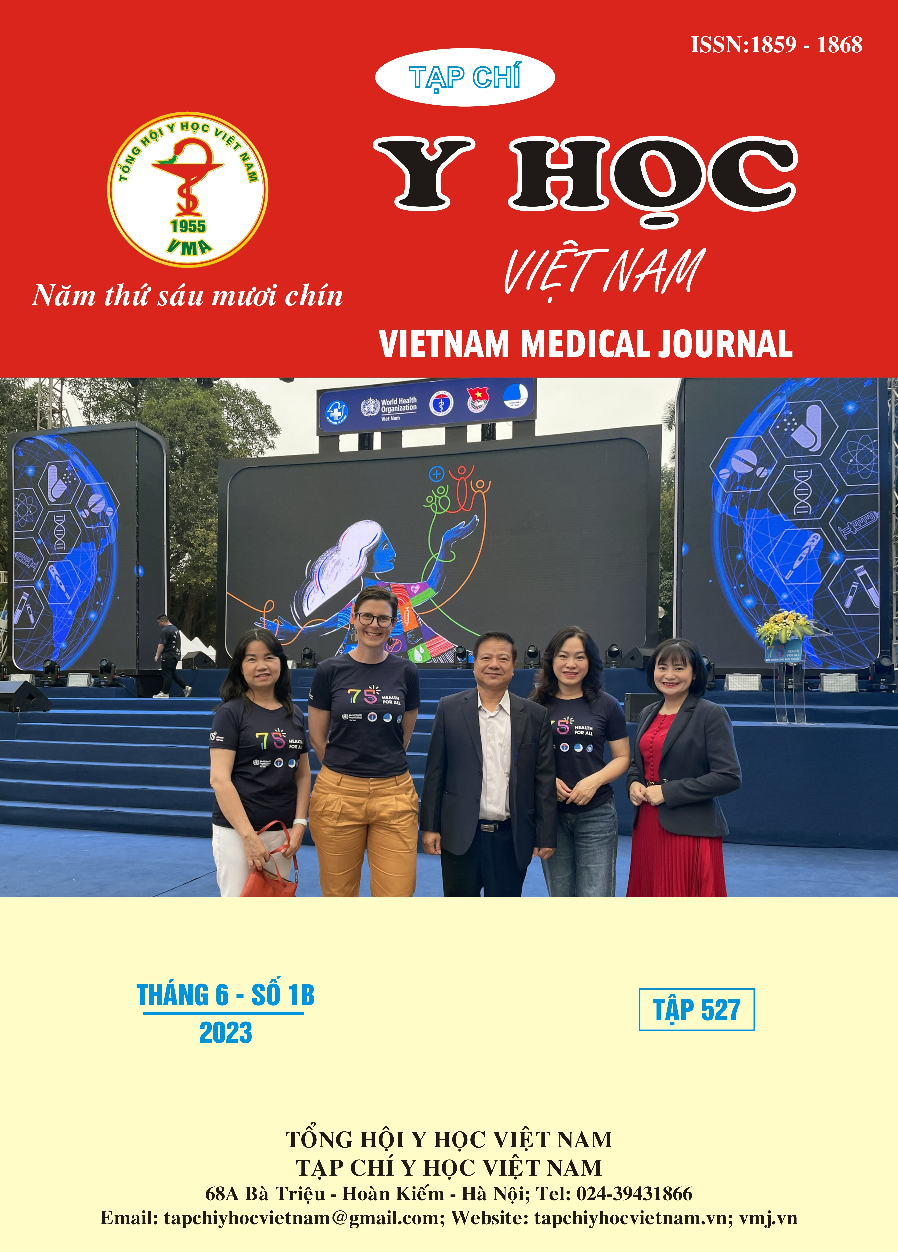ASSESSMENT OF BIOLOGICAL PERFORMANCE IN VITRO
Main Article Content
Abstract
Background: The acellular pericardium is a heterogeneous tissue that has been cellized to eliminate its ability to induce an immune response. However, the process of cell reduction can affect the extracellular matrix structure, change the mechanical properties as well as the mechanical strength of the tissue, causing rapid decomposition after transplantation into the body. Objective: To evaluate the biological properties of acellular pericardium in vitro. Research object and method: Acellular pericardium produced from pig pericardium. Criteria for selecting acellular pericardium samples: produced from pig pericardium at the Biomaterials Laboratory - University of Natural Sciences, Vietnam National University, Ho Chi Minh City. Human gum fibroblasts. Research location: Biomaterials Laboratory - University of Natural Sciences, Vietnam National University, Ho Chi Minh City. Research period: From July 2021 to August 2022 Research method Study design: a double-blind experimental descriptive study. Sampling method: randomly select research subjects that meet the sampling criteria. Result: RGB ratio is higher than 70%, the extract is not toxic to cells. After 12 weeks, the graft mass did not change from baseline, the difference was not statistically significant (p = 0.407, very little autolysis took place in the graft. Cells in the experimental group maintained their elongated shape, very few cells were peeled off the culture surface, the OD value was higher than 90% of the negative control group. Conclusion: acellular pericardium is not toxic to gingival fibroblast cells.
Article Details
Keywords
: Acellular pericardium, gingival fibroblasts, in vivo.
References
2. Barcia JJ (2007), “The Giemsa stain: its history and applications”, International Journal of Surgical Pathology, Vol. 15 (3), pp. 292 - 296.
3. Gilpin A, Yang Y (2017), “Decellularization Strategies for Regenerative Medicine: From Processing Techniques to Applications”, BioMed Research International, Vol. 2017, pp. 9831534 - 13
4. ISO (2009) "10993-5. Biological evaluation of medical devices, Part 5: Tests for in vitro cytotoxicity". Int Stand. 3, 1-42.
5. Kumar P, Nagarajan A, Uchil PD (2018), “Analysis of Cell Viability by the MTT Assay”, Cold Spring Harbor Protocols Vol. 2018 (6), pp. 469 - 471.
6. My Thi Ngoc Nguyen, Ha Le Bao Tran (2018), “Effect of Modified Bovine Pericardium on Human Gingival Fibroblasts in vitro”, Cells Tissues Organs, Vol. 206 (6), pp. 296 – 307
7. Nakamura N, Kimura T, Kishida A (2017), “Overview of the Development, Applications, and Future Perspectives of Decellularized Tissues and Organs”, ACS Biomaterials Science & Engineering, Vol. 3 (7), pp. 1236-1244.
8. Tolosa. L, Donato. M. T, Gómez-Lechón. M. J (2018) "General Cytotoxicity Assessment by Means of the MTT Assay". Methods Mol Biol, 1250, 333-48MTT9.Vallecillo-Rivas M, Toledano-Osorio M, 9.Vallecillo C, Toledano M, Osorio R (2021), “The Collagen Origin Influences the Degradation Kinetics of Guided Bone Regeneration Membranes”, Polymers, Vol. 13 (17), pp. 3007.
Trần Lê Bảo Hà, Nguyễn Thị Thanh Giang, Tô Minh Quân, Phan Kim Ngọc (2009) "Thu nhận khuôn nền ngoại bào từ nguyên bào sợi in vitro". Tạp chí phát triển Khoa học và Công nghệ Y học, 12 (9), 5-11.
2. Barcia JJ (2007), “The Giemsa stain: its history and applications”, International Journal of Surgical Pathology, Vol. 15 (3), pp. 292 - 296.
3. Gilpin A, Yang Y (2017), “Decellularization Strategies for Regenerative Medicine: From Processing Techniques to Applications”, BioMed Research International, Vol. 2017, pp. 9831534 - 13
4. ISO (2009) "10993-5. Biological evaluation of medical devices, Part 5: Tests for in vitro cytotoxicity". Int Stand. 3, 1-42.
5. Kumar P, Nagarajan A, Uchil PD (2018), “Analysis of Cell Viability by the MTT Assay”, Cold Spring Harbor Protocols Vol. 2018 (6), pp. 469 - 471.
6. My Thi Ngoc Nguyen, Ha Le Bao Tran (2018), “Effect of Modified Bovine Pericardium on Human Gingival Fibroblasts in vitro”, Cells Tissues Organs, Vol. 206 (6), pp. 296 – 307
7. Nakamura N, Kimura T, Kishida A (2017), “Overview of the Development, Applications, and Future Perspectives of Decellularized Tissues and Organs”, ACS Biomaterials Science & Engineering, Vol. 3 (7), pp. 1236-1244.
8. Tolosa. L, Donato. M. T, Gómez-Lechón. M. J (2018) "General Cytotoxicity Assessment by Means of the MTT Assay". Methods Mol Biol, 1250, 333-48MTT9.Vallecillo-Rivas M, Toledano-Osorio M, 9.Vallecillo C, Toledano M, Osorio R (2021), “The Collagen Origin Influences the Degradation Kinetics of Guided Bone Regeneration Membranes”, Polymers, Vol. 13 (17), pp. 3007.


